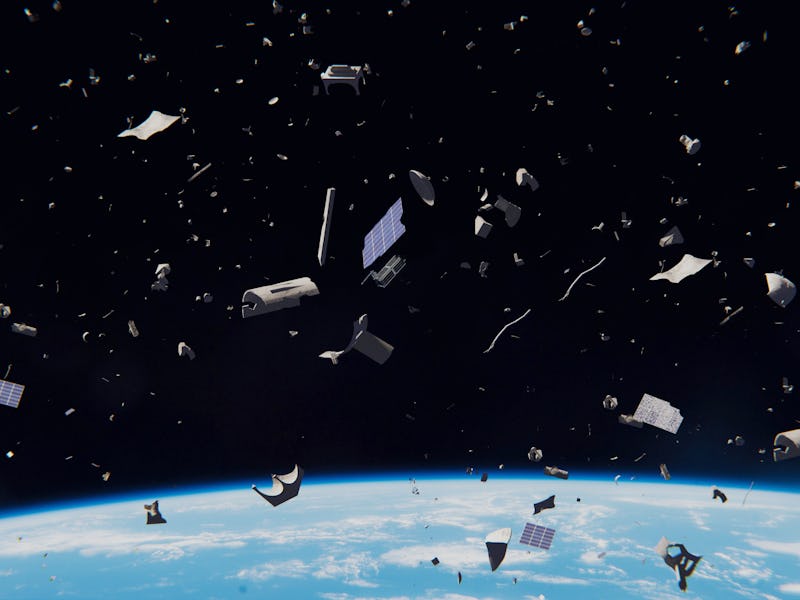Researchers are using a neural network to spot space junk with lasers
If only Earth trash worked like this.

You may not realize it, but there’s a lot of space junk floating in the Earth’s orbit. The European Space Agency estimates there are nearly 1 million objects that are larger than 1 centimeter floating in Earth’s orbit. Of the roughly 5,000 satellites in the Earth’s orbit, less than 2,000 are still operational. This presents a safety concern when we’re trying to navigate our way through space.
Chinese researchers have now developed a way to use a neural network to help lasers more accurately locate space junk floating around the planet. Neural networks are algorithms that mimic how the human brain operates. This research was recently published in the Journal of Laser Applications.
With this system, these researchers were able to improve the accuracy of a laser-ranging telescope, which shoots a laser at faraway objects to measure their distance from Earth. The problem researchers had previously encountered is that smaller objects don’t reflect back the laser very well, so they’re hard to locate.
Tianming Ma, from the Chinese Academy of Surveying and Mapping, Beijing and Liaoning Technical University, Fuxin, said in a statement that they were able to locate small objects with far greater accuracy using this new method.
“After improving the pointing accuracy of the telescope through a neural network, space debris with a cross sectional area of 1 meter squared and a distance of 1,500 kilometers can be detected,” Ma said.
The neural network helped these researchers more accurately point the laser to locate space junk. Other attempts to improve the pinpointing of the laser were only able to pinpoint debris to a 1-kilometer range.
They trained the neural network using a Genetic Algorithm, which mimics natural selection, and a Levenberg–Marquardt algorithm, which is useful for solving systems of non-linear equations.
See also: Space Junk Is a Lot Weirder Than Dead Satellites and Discarded Boosters
Having too much space junk floating around the planet can be dangerous for spacecraft leaving the Earth’s atmosphere and spacecraft that orbit the planet. This new method of locating debris could help reduce that danger.
“Obtaining the precise orbit of space debris can provide effective help for the safe operation of spacecraft in orbit,” Ma said.
Space junk has become such a problem that the European Space Agency is actually planning to start collecting it in 2025. A four-armed robot will be launched that year to collect one item of debris, and the agency will use this as a test for collecting more items in the future. The director of the ESA is proposing new rules that would make it so those who launch satellites are responsible for retrieving them when they’re decommissioned.
Abstract
This study aims to analyze four different telescope pointing correction models to verify the highest accuracy of the laser ranging telescope corrected by the back propagation (BP) neural network model optimized by the proposed genetic algorithm and Levenberg–Marquardt. In this process, first, the observation data of 95 stars are used to solve the coefficients of the four models, and then the pointing accuracy of the telescope corrected by those four models is verified by the detection results of 22 stars. The results indicate that the pointing accuracy of the telescope corrected by the three traditional pointing correction models, the mount model, the spherical harmonic function model, and the basic parameter model, reaches approximately 15 in. in the azimuth and ∼10 in. in the pitch; however, the BP neural network model optimized by the genetic algorithm and Levenberg–Marquardt has a pointing accuracy of 3.42 in. in the azimuth and 2.44 in. in the pitch. Finally, different space debris is detected by the telescope corrected by this model. The results show that the pointing accuracy of the telescope corrected by this model probably increases to nine times in the azimuth and three times in the pitch. The results of this study prove that the BP neural network model optimized by the genetic algorithm and Levenberg–Marquardt greatly increases the pointing accuracy of the telescope and thus significantly improves the success rate of space debris detection.